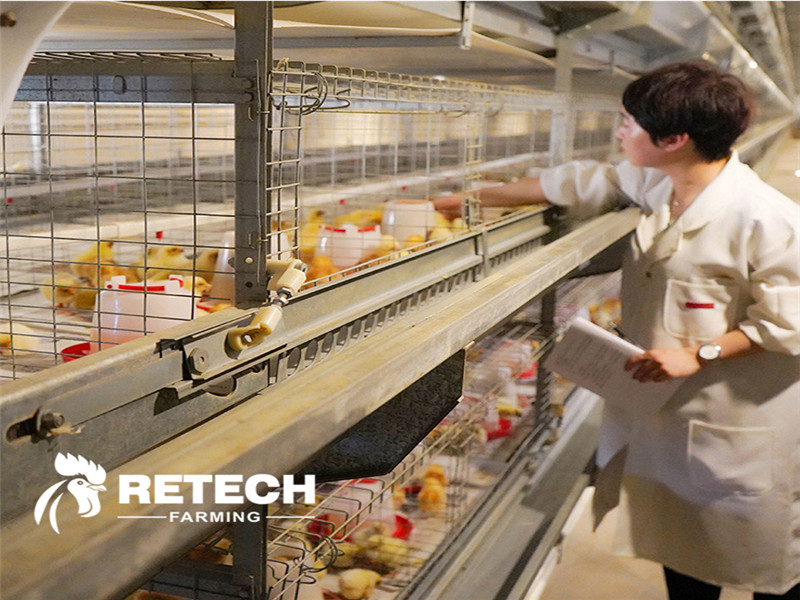Close search
 Published :
/
Published :
/ Posted by : Retch
Posted by : RetchThe relevant parameters that should be set by the environmental controller in production: target temperature, static pressure difference value and ventilation level. Only by making reasonable adjustments to the parameters of the environmental controller according to different seasons and different external climate changes can the automation of the environmental control of the chicken coop be realized.
Heat stress in summer is very harmful to chickens, affecting their egg production performance, reducing egg production by 3-4% and even directly threatening their lives. Therefore, environmental control in summer should follow the following principles.
Use the combination of the wet curtain of the chicken coop for cooling and the wind cooling effect produced by the longitudinal ventilation to increase the wind speed for summer cooling of the chickens.
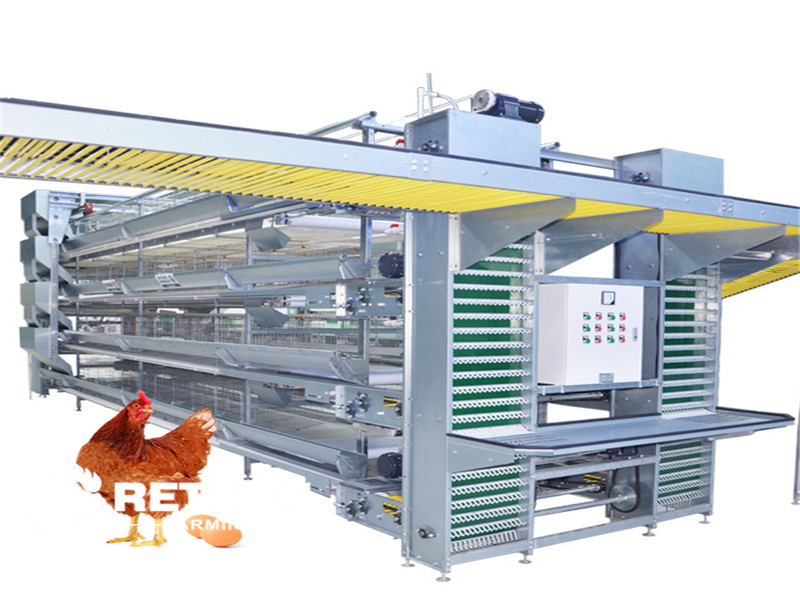
When the temperature of the chicken coop is 13-28℃, the environmental controller controls the number of fans opened and the wet curtain opening time through the temperature to make the temperature of the chicken coop reach the target temperature.
When the temperature in the coop is below 30℃, the environmental controller increases the ventilation level by starting more fans to increase the ventilation of the coop, so that the air flow rate above the chickens in the coop reaches 1.5-2 m/s, which accelerates the heat dissipation of the chickens by convection and can effectively reduce the body temperature of the chickens, i.e., the "wind cooling effect" as it is usually called. ".
When the temperature of the chicken coop reaches 30℃ or more, the environmental controller starts the wet curtain cooling system through the relay, so that the hot air through the wet curtain cools down and then forms the cold air into the chicken coop, using the air flow air-cooling effect to take away the heat of the chicken coop and reduce the temperature of the chicken coop.
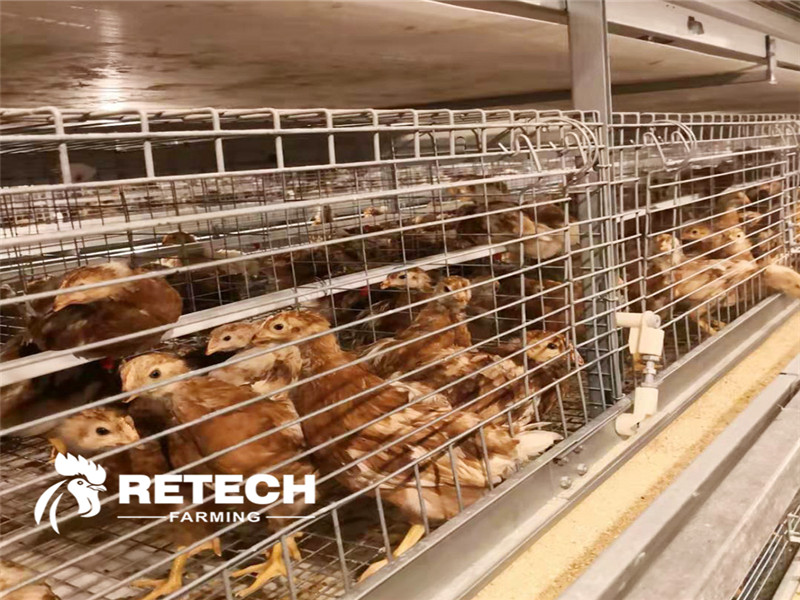
When the air passes through the chicken coop, the air flow itself has the wind cooling effect, and when the wind speed exceeds 3 m/s, it will cause the occurrence of conditioned diseases such as chicken diarrhea. The environmental controller activates the coop's roller shutter system through the static pressure difference value of the chicken house to adjust the area of the air inlet and to ensure the wind speed of the coop. In summer the environmental conditions are improved by a higher air flow with a larger air inlet area (lower pressure).
The environmental control system realizes the automation of the ventilation system, air intake system and wet curtain cooling system control. Through the setting of parameters such as temperature and static pressure difference value of the environmental controller, it reduces the untimely adjustment caused by human factors in the environmental control of the chicken farm and the stress caused to the flock. Matters that should be noted in the use of the environmental control system.
Poorly closed chicken coop, resulting in the wind through the air leakage into the coop, resulting in a small static pressure difference, affecting the ventilation effect of the chicken coop, especially in winter will cause the phenomenon of cold wind blowing directly to the chickens.
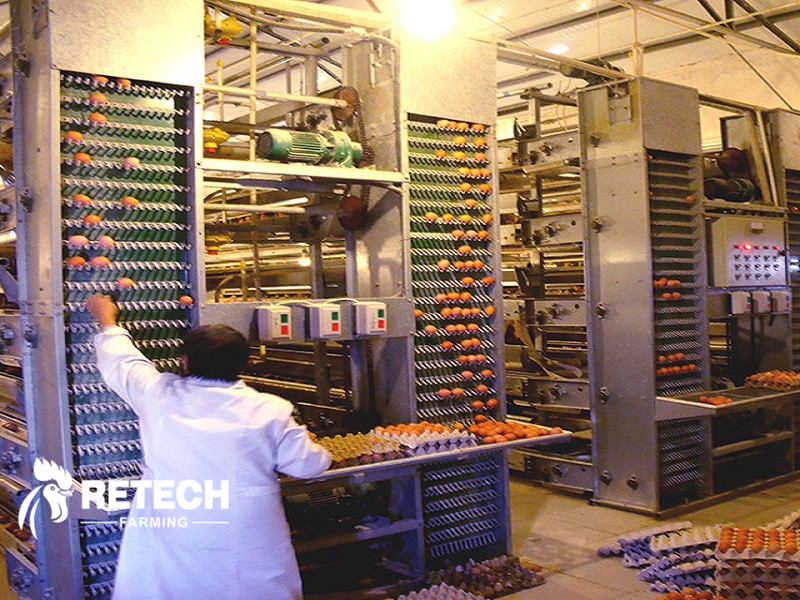
First of all, the small window should be opened more than the minimum opening degree to ensure the inlet area of the chicken coop, to avoid the phenomenon of thieves wind. Secondly, the small window should be equipped with a wind guide to ensure the direction of airflow into the chicken coop.
As the relative humidity of the external air in the chicken coop increases, the effect of using wet curtain cooling gradually decreases. When the external humidity is higher than 70%, the wet curtain should be closed and the ventilation should be increased to reduce the heat stress caused to the chickens.
The pressure probe inside and outside the chicken coop should be kept clean and cleaned regularly to avoid dust blocking the pressure pipe and affecting the accuracy of the negative pressure controller.
The pressure probe outside the chicken coop should be placed outside the chicken coop in the back wind to prevent the wind from interfering with the negative pressure controller and affecting the ventilation effect of the chicken coop.
The air pipe should be kept clear to prevent the air pipe from being squeezed and deformed, which will affect the accuracy of the negative pressure controller.
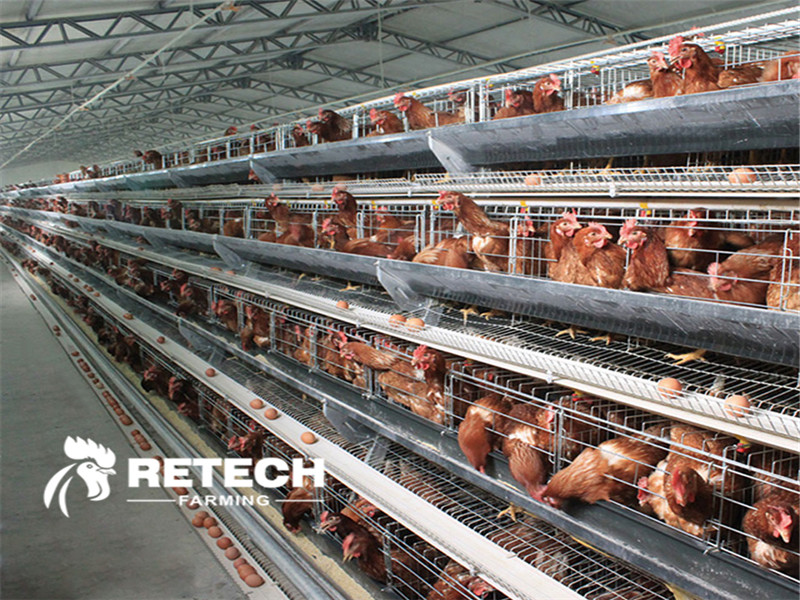
The environmental controller must be protected from lightning to prevent damage to the electronic devices in the controller.
Temperature sensor in use, should be regularly temperature check, if the temperature difference of more than 1 ℃ should be promptly corrected. Calibration, all temperature sensor probes should be placed in a barrel at the same time, measuring the temperature of the water in the barrel, rather than measuring the temperature of the air, because the air in motion, its temperature in the range of a few degrees will change rapidly, thus making it difficult to accurately calibrate. You should ensure that the temperature of the water is close to the temperature of the air in the surrounding environment to prevent the temperature from rising or falling sharply during calibration.
